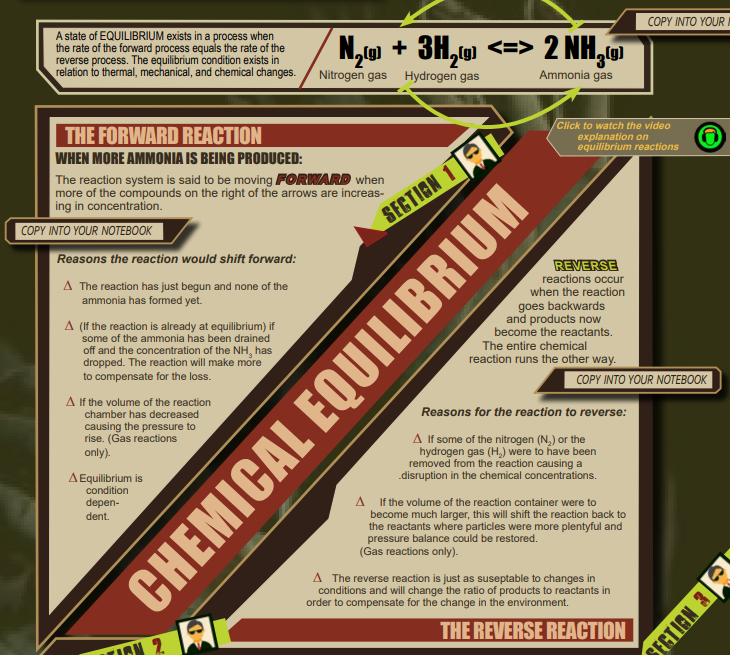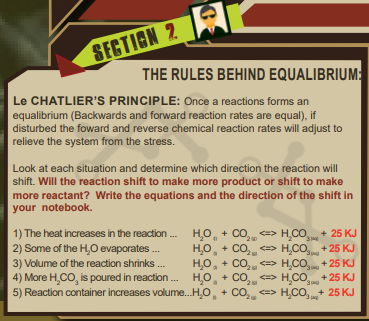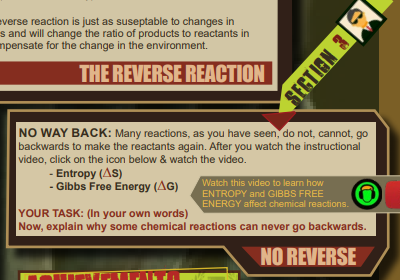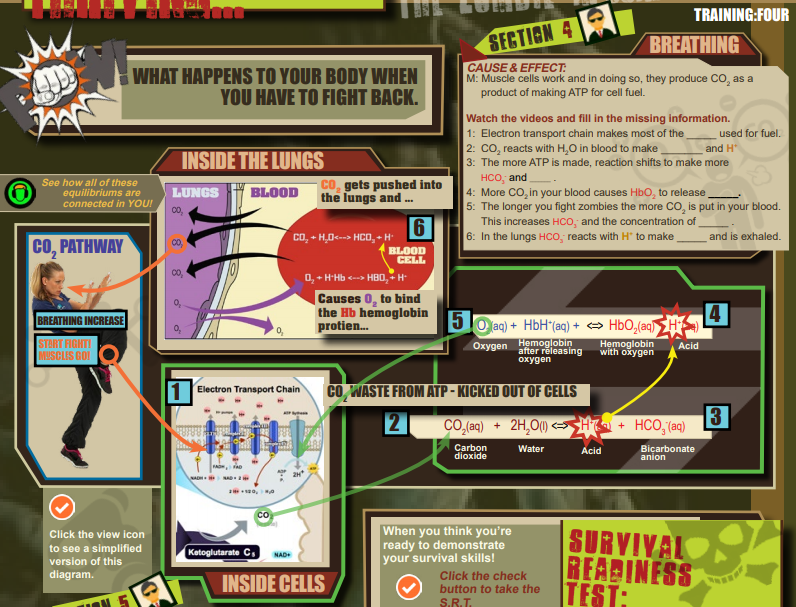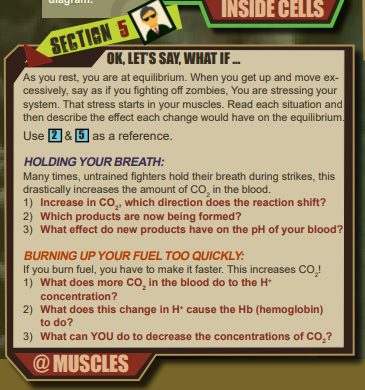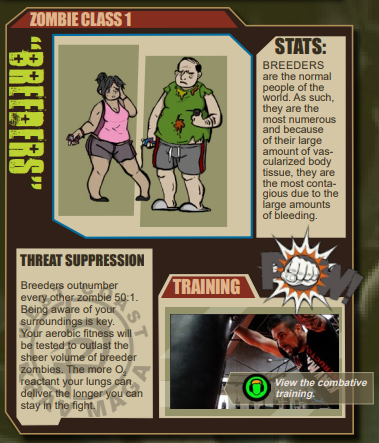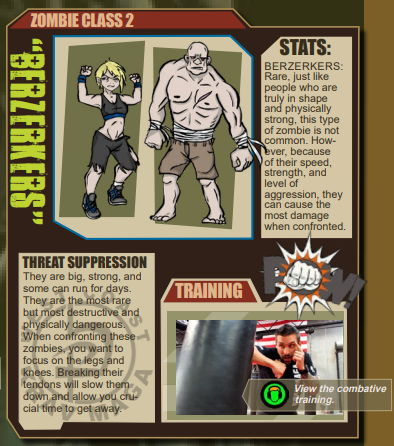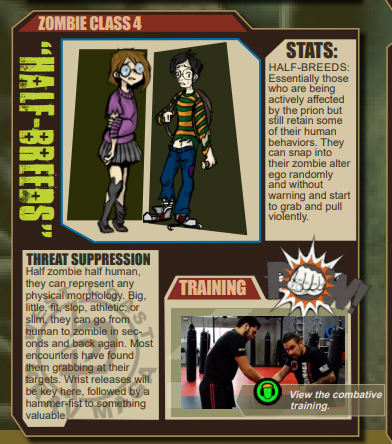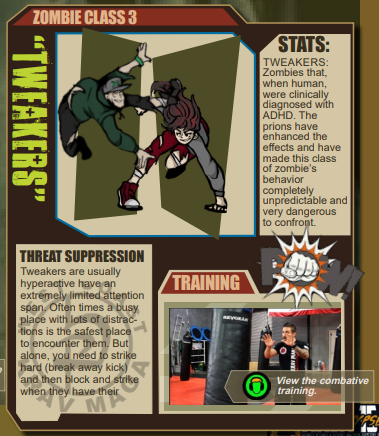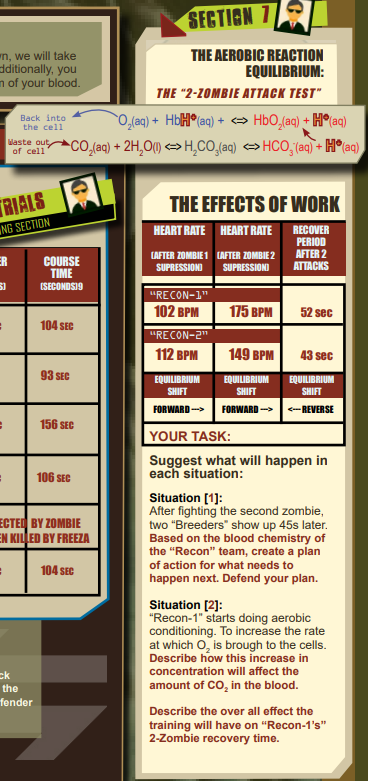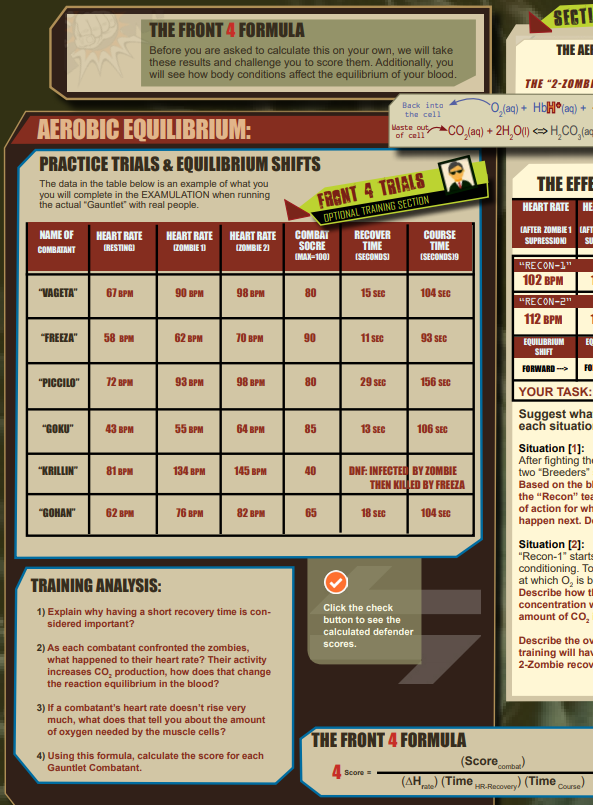Training Four Guide
Section ONE: (Est. Time = 20 min)
Equilibrium Reactions: They go backwards?
There is a “Director’s Briefing icon” linked to video instructions for the section so the students know exactly how to do the work.
This is THE MOST IMPORTANT CRITERIA to understanding the biochemistry that is about to happen in the next few sections.
The reaction at the top is, eh, one of the more traditional reactions that are used to introduce the concept of equilibrium.
The media icon here is a very good introduction by “Crash Course” a YouTube provider that specialized in explaining complicated subjects in a not-so-painful manner. The students are more than able to view these on their own or it can be done as a class unit. It’s advisable that if you have students that are more easily distracted, stop occasionally and ask questions of the students, just to keep them on their toes.
For more Crash Course videos, click here to access their YouTube channel.
Here’s what to do in this section:
- Students write down the reasons reactions would go forward in their ATN.
- Students move to the “reverse” side and do the same. Write down the key material in their ATN.
Section TWO: (Est. Time = 15 min)
Every wave is made of two parts:
There is a “Director’s Briefing icon” linked to video instructions for the section so the students know exactly how to do the work.
These rules basically state that equilibrium states will shift directions to account for stresses to the chemical system. These are the basic guides to predicting how equilibrium reactions will react to changes in the system:
- The direction of the reaction will shift away from the stress where concentrations are increased.
— - The direction of the reaction will shift toward the part of the action where chemical concentrations have decreased.
— - In reactions that produce heat, adding heat will force the reaction in reverse. Reactions that absorb heat, adding heat will move the reaction forward to absorb excess heat and maintain the reaction balance at the new temperature.
— - Volume changes only affect reactions that are comprised of gas reactants and gaseous products. The presence of any aqueous or solid products voids the deal.
Answers to Section One Questions:
- Heat increases, reaction makes more reactants (reverse)
- Water leaves the system, reaction makes more reactants (reverse)
- Decrease in volume of reaction volume, there’s no change to the reaction
- More carbonic acid added, reaction makes more reactants (reverse)
- Increase volume of reaction chamber, there is no change in reaction
Section THREE: (Est. Time = 25 min)
The source of all light – it’s all made the same.
There is a “Director’s Briefing icon” explains what to do in this section and also provides a bit of insight into the ideas presented here. If students are working independently, they should ALWAYS start by listening to the director’s briefing on the section.
The media icon is linked there is linked to a video that helps explain what the ideas of Entropy and Gibbs free energy are and how they can help predict if a chemical reaction has any hope of going backwards.
Answers to Section One Questions:
- Entropy is chaos and Gibbs free energy is the energy in the system available to put the pieces back together again. If the reactants start as an highly organized system (low entropy) and breaks into many pieces (high entropy) the system is likely not to have enough energy available for the pieces to rearrange themselves back again. Like breaking a vase, if it breaks into two pieces maybe there’s some hope of putting it back together. If it lands and breaks into a thousand tiny pieces, the system is too chaotic and there’s not enough energy (or glue or patience) to put it back together. So, it will never regain its original form.
Section FOUR (Est. Time = 20 min)
What happens in your body when you have to fight back.
There is a “Director’s Briefing icon” that is particularly important to watch in order to get a grip on this madness. The diagram is … crazy. And it might not be a bad idea to watch the video before even putting this to the students to watch.
The Big Picture: At some point the PAF will stop and the damage to humanity will have been done. There are not millions, perhaps billions of “zombiefied” individuals walking the Earth in a confused, scared, and hyper-reactive state. At some point, the fight will have to be taken to them. What happens in your blood, that if ignored, could mean ones end.
The focus is on the equilibrium where hemoglobin releases oxygen in the muscles where energy is needed, and hemoglobin acquires oxygen in the lungs. Both of these equilibrium events are moderated by the acidity of the blood (H+) ions. The HCO3– molecule is the buffer that helps moderate the H+ concentration.
The boxes in blue correspond to the numbered questions in the box in the upper right hand corner of the section.
Answers to Section One Questions:
- The electron transport chain makes most of the ATP used for fuel
- CO2 reacts with water to make HCO3– and H+
- The more ATP is made, reaction shifts to make more HCO3– and H+
- More CO2 in your blood causes HbO2 to release O2.
- The longer you fight zombies the more CO2 is put into your blood. This increases the HCO3– and the concentration of H+
- In the lungs HCO3– reacts with H+ to make CO2 and is exhaled.
Section FIVE (Est. Time = 15 min)
OK, let’s say, what if…
There is a “Director’s Briefing icon” linked to video instructions for the section so the students know exactly how to do the work. This is especially important for students working on their own.
Section 5 revisits the idea of energy levels and how “FALLING” electrons are the driving force behind photon emission.
The answers here are all about things falling and the idea that the higher something falls from the more energy it has. Which, in a sense, is what we are suggesting electrons do in a metaphorical sort of way.
Answers to Section One Questions:
- If the zombie falls out the top floor to the ground he will hit with a lot of force energy, just like how an electron falling from N=5 would produce an electron of high energy.
- This could be a tricky question and the real important part about this is that not all the floors are the same distance from each other. ANYTHING falling to the first floor will have a longer way to go (have more energy) than any thing falling from any other floor to any other floor.
- According to the EM chart at the top of Training 2, the highest energy photo in the list is visible light. Therefore, the the electron must be falling from the highest distance when making visible light.
Optional physical “lab”?
Breeders:
As seen in the description on the left, this class encompasses the vast majority of people in the U.S. as adults.
Defense
Berzerkers:
Statistically, this would be the smallest of the four groups in terms of numbers. However, they are without question the most dangerous. Imagine Dwayne Johnson (The Rock) 6’5″ 270 lbs of skull smashing power without any mental discernment or care for humanity. OK, now you get it.
Defense:
Watch the Media icon to see the defense instruction video, Students should then practice on their own – likely at home.
Half-Breeds:
These are folks who’s zombie transformation is only partially complete. There is a high probability that a fraction of the population were in areas that did not experience the full force of the PAF or had lower concentrations of prions in their brains.
Defense:
Watch the Media icon to see the defense instruction video, Students should then practice on their own – likely at home.
Tweakers:
People with ADHD have some very curious cerebral wiring and as a result the PAF did some really interesting things to their attention spans.
Defense:
Watch the Media icon to see the defense instruction video, Students should then practice on their own – likely at home.
Section SIX: (Est. Time = 15 min)
As always, it’s a good idea to start with the director’s briefing icon and have the director explain what to do. This is crucial for students who are distance learners or just students that spaced out while the instructions were given and now are trying to figure out what is going on.
These are open ended questions that support a claim, evidence, reasoning format. Below are a couple of suggestions on answers that could be provided. However, the idea here is to judge the reasoning based on provided data, not a “correct answer”.
An analysis of two “Recon” patrol members:
- At 45 seconds, Recon-1 is fully recovered and can engage the zombies. If he can hold of a few seconds, Recon-2 will be fully recovered. Breeders do not require a long engagement to suppress (as seen in the Krav instruction videos) the two should immediately suppress the opposition and then leave the area.
— - The increase in the rate oxygen shows up will allow for physical engagement for a much longer period of time. This will also reduce “Recon-1’s” recovery time to something faster than 52 seconds.
Optional data analysis:
(Est. Time = 35 min)
As always, it’s a good idea to start with the director’s briefing icon and have the director explain what to do. This is crucial for students who are distance learners or just students that spaced out while the instructions were given and now are trying to figure out what is going on.
STEM: Mathematical analysis and use of formulas to derive decisions made on numeric data.

